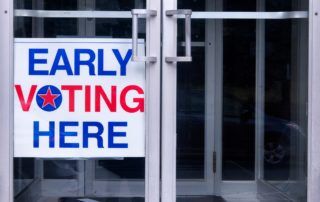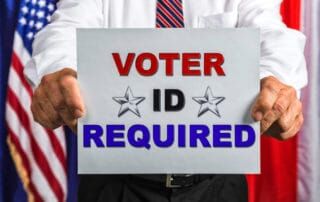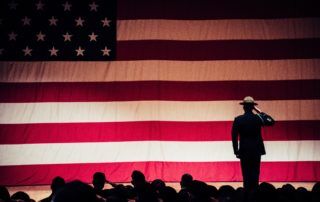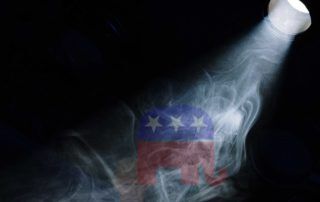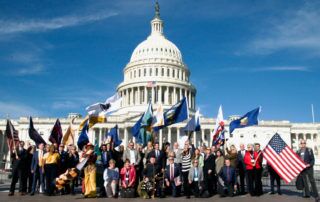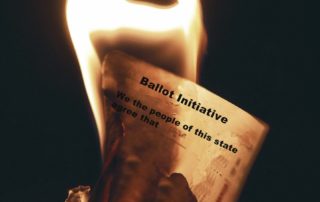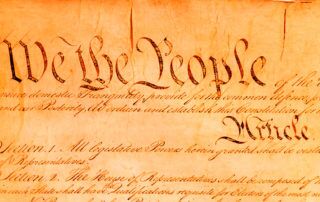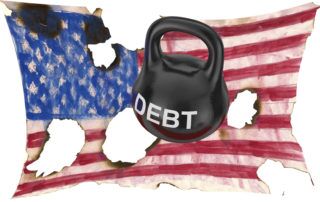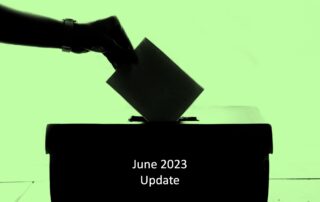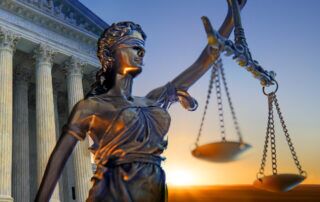Introduction
The right to vote in America is a fundamental democratic liberty – it is one of those rights that we fight wars to defend. Yet, when the nation was founded, voting was almost exclusively reserved for propertied white men. Since then, voting rights have slowly grown more inclusive, expanding to an ever broader cross-section of the American public, but this progress has almost always been hard won.
Voting rights are tied to citizenship – you have to be a citizen in order to be eligible to vote. Throughout our history, this linkage has also meant that voting rights were closely tied to the paths to citizenship available to — or made unavailable to — different immigrant populations, native peoples, and the formerly enslaved and their descendants.
The Constitution does not stipulate who can vote. Instead, it is left to the states to decide, and they have often tried—with varying degrees of success—to limit voting. States initially allowed only a select few to cast a ballot, enacting property, tax, religion, gender, and race requirements. When George Washington was elected president, most white men could not vote as they did not own property. Only six percent of the total population was eligible to vote in that first election.
With time, pressures mounted to remove restrictions, beginning with the landowning requirement. In 1856, North Carolina became the last state to drop property demands for white men. And while the Constitution decreed that no officeholder should be subjected to a religion test, several states continued to require one for voting until 1828, when Maryland allowed Jews to enter the ballot booth. By the 1860s, all white males, regardless of their religion and property status, largely enjoyed universal suffrage in the US.
Other segments of the population did not fare as well. Women, African Americans, Native Americans, and many immigrants were barred from casting ballots for much of the country’s existence. African Americans gained citizenship with the ratification of the Fourteenth Amendment in 1868. The Fifteenth Amendment, passed two years later, gave African American men the right to vote. Still, the Southern states suppressed the black vote through intimidation (lynchings, shootings, and other acts of violence) and various other measures—such as poll taxes and literacy tests. Such efforts proved so effective that by the early 20th century, nearly all African Americans had been disenfranchised in the South.
The history of voting rights in the US is largely the story of the struggles of women, the formerly enslaved, and native peoples to secure the right to vote – then to keep it. Repeated attacks on voting rights and efforts to manipulate the outcome of the vote continue up to this day, as illustrated in the timeline included here and discussed in more detail in the problem brief on voting rights.
The timeline offers a brief glimpse into the steady but often challenged expansion of voting rights.
NOTE: Throughout our history, immigrants have also struggled to obtain and then exercise their right to vote, but their struggle is more closely tied to the back-and-forth over their right to enter the country and become citizens. We examine that history in our storyline on the indifference of US law to immigrants.
Yet today, the Republican Party finds itself entertaining some of the same unsettling nativist and authoritarian impulses that characterized Europe throughout the 20th century. These ideals are antithetical to what it means to be a Republican, and what it means to be American.
— from Defending Democracy Together
Voting Rights Timeline
Sources
The URLs included with the sources below were good links when we published. However, as third party websites are updated over time, some links may be broken. We do not update these broken links. If you are interested in the source, it may be possible to find it by copying and pasting the URL into a search on the Internet Archive Wayback Machine. From the search results, be sure to choose a date from around the time our article was published.
Northern California Citizenship Project Mobilize the Immigrant Vote 2004 – Capacity Building Series, “U.S. Voting Rights Timeline”, https://a.s.kqed.net/pdf/education/digitalmedia/us-voting-rights-timeline.pdf, accessed Aug 30, 2019
iVote Civic Education Fund, Voting Rights Timeline, https://www.ivotecef.org/timeline, accessed Aug 30, 2019
Grace Panetta and Olivia Reaney, “The evolution of American voting rights in 242 years shows how far we’ve come — and how far we still have to go,” Business Insider, Feb 15, 2019, https://www.businessinsider.com/when-women-got-the-right-to-vote-american-voting-rights-timeline-2018-10, accessed Aug 30, 2019
ACLU, “Voting Rights Act: Major Dates in History”, https://www.aclu.org/issues/voting-rights/voting-rights-act/history-voting-rights-act, accessed Aug 2019
Ron Chernow, Grant, Penguin Publishing Group, Oct 2017
FairVote, “Voting Rights Timeline”, Aug 2004, http://archive.fairvote.org/righttovote/timeline.htm, accessed Aug 2019
Jone Johnson Lewis, “Women’s Rights and the Fourteenth Amendment”, ThoughtCo., Jun 23, 2019, https://www.thoughtco.com/womens-rights-and-the-fourteenth-amendment-3529473, accessed Nov 19, 2019
Wikipedia, “Seventeenth Amendment to the United States Constitution”, https://en.wikipedia.org/wiki/Seventeenth_Amendment_to_the_United_States_Constitution, accessed Nov 19, 2019
Wikipedia, “Voting rights in the United States”, https://en.wikipedia.org/wiki/Voting_rights_in_the_United_States, accessed Nov 19, 2019
Wikipedia, “Twenty-fourth Amendment to the United States”, accessed Nov 20, 2019
US Dept. of Justice, Uniformed and Overseas Citizens Absentee Voting Act, https://www.justice.gov/crt/uniformed-and-overseas-citizens-absentee-voting-act, accessed Nov 20, 2019
Editors, “Seneca Falls Convention”, History.com, Nov 20, 2019, https://www.history.com/topics/womens-rights/seneca-falls-convention, accessed Jun 21, 2020
Alan Greenblatt, “The Racial History Of The ‘Grandfather Clause’”, NPR, Oct 22, 2013, https://www.npr.org/sections/codeswitch/2013/10/21/239081586/the-racial-history-of-the-grandfather-clause, accessed Jun 20, 2020
Wikipedia, “Dawes Act”, https://en.wikipedia.org/wiki/Guinn_v._United_States, accessed Jun 21, 2020
Editors, “19th Amendment”, History.com, Mar 27, 2020, https://www.history.com/topics/womens-history/19th-amendment-1, accessed Jun 18, 2020
Northern California Citizenship Project, “U.S. Voting Rights Timeline”, 2004, https://a.s.kqed.net/pdf/education/digitalmedia/us-voting-rights-timeline.pdf, accessed Jun 18, 2020
Wikipedia, “Timeline of Voting Rights in the United States”, last edited Jun 16, 2020, https://en.wikipedia.org/wiki/Timeline_of_voting_rights_in_the_United_States, accessed Jun 18, 2020
Fred Shapiro, “The Origin of ‘African-American’”, Yale Alumni Magazine, Jan/Feb 2016, https://yalealumnimagazine.com/articles/4216-the-origin-of-african-american, accessed Jun 18, 2020
Wikipedia, Guinn v United States, https://en.wikipedia.org/wiki/Guinn_v._United_States, accessed Jun 22, 2020
Oyez, “The Civil Rights Cases”, www.oyez.org/cases/1850-1900/109us3, accessed Jun 22, 2020
Melvin I. Urofsky, “Civil Rights Cases”, Encyclopedia Britannica, Oct 9, 2019, https://www.britannica.com/topic/Civil-Rights-Cases, accessed Jun 22, 2020
Wikipedia, “Civil Rights Cases”, https://en.wikipedia.org/wiki/Civil_Rights_Cases, accessed Jun 22, 2020
NebraskStudies.org, “Citizenship for Native Veterans”, Nebraska’s PBS & NPR stations, http://nebraskastudies.org/1900-1924/native-american-citizenship/citizenship-for-native-veterans/, accessed Jun 22, 2020
Ray Levy-Uyeda, “Why some U.S. citizens won’t get to vote because of where they live”, Mic, Mar 3, 2020, https://www.mic.com/p/why-some-us-citizens-wont-get-to-vote-for-president-because-of-where-they-live-22417330, accessed Jun 18, 2020
Editors, “Civil Rights Act of 1964”, History.com, https://www.history.com/topics/black-history/civil-rights-act, accessed Jun 22, 2020
Editors, “Voting Rights Act of 1965”, History.com, https://www.history.com/topics/black-history/voting-rights-act, accessed Jun 22, 2020
Editors, “26th Amendment”, History.com, Nov 27, 2019, https://www.history.com/topics/united-states-constitution/the-26th-amendment, accessed Jun 20, 2020
Disability Rights and Resources, “Voting Accessibility for the Elderly and Handicapped Act”, https://drradvocates.org/voting-accessibility-for-the-elderly-and-handicapped-act/, accessed Jun 22, 2020
Wikipedia, “Uniformed and Overseas Citizens Absentee Voting Act”, https://en.wikipedia.org/wiki/Uniformed_and_Overseas_Citizens_Absentee_Voting_Act, accessed Jun 22, 2020
Wikipedia, “National Voter Registration Act of 1993”, https://en.wikipedia.org/wiki/National_Voter_Registration_Act_of_1993, accessed Jun 22, 2020
Ballotpedia, “Help America Vote Act (HAVA) of 2002”, https://ballotpedia.org/Help_America_Vote_Act_(HAVA)_of_2002, accessed Jun 22, 2020
Wikipedia, “Commission on Federal Election Reform”, https://en.wikipedia.org/wiki/Commission_on_Federal_Election_Reform, accessed Jun 21, 2020
The Leadership Conference on Civil and Human Rights, “Democracy Diverted: Polling Place Closures and the Right to Vote”, Sep 2019, https://civilrights.org/democracy-diverted/, accessed Jun 21, 2020
Carnegie Corporation of New York, “Voting Rights: A Short History”, Nov 18, 2019, https://www.carnegie.org/topics/topic-articles/voting-rights/voting-rights-timeline/, accessed Jun 22, 2020
Brennan Center for Justice, “Voting Rights Groups Respond to Carter-Baker Commission Report on Election Reform”, Sep 19, 2005, https://www.brennancenter.org/our-work/analysis-opinion/voting-rights-groups-respond-carter-baker-commission-report-election, accessed Jun 18, 2020
Michael Wines, “Freed by Court Ruling, Republicans Step Up Effort to Patrol Voting”, NY Times, May 18, 2020, https://www.nytimes.com/2020/05/18/us/Voting-republicans-trump.html, accessed Jun 18, 2020
Vann R. Newkirk II, “The Republican Party Emerges From Decades of Court Supervision”, The Atlantic, Jan 9, 2018, https://www.theatlantic.com/politics/archive/2018/01/the-gop-just-received-another-tool-for-suppressing-votes/550052/, accessed Jun 18, 2020
President George W. Bush, “President Bush Signs Voting Rights Act Reauthorization and Amendments Act of 2006”, The White House, Jul 27, 2006, https://georgewbush-whitehouse.archives.gov/news/releases/2006/07/20060727.html, accessed Jun 25, 2020
Credits
Related Problem: Voting Rights
Contributors: George Linzer, Michael Deal, Flannery Wiest
Published: November 3, 2019
Last Updated: September 21, 2021
Feature image: George Linzer



